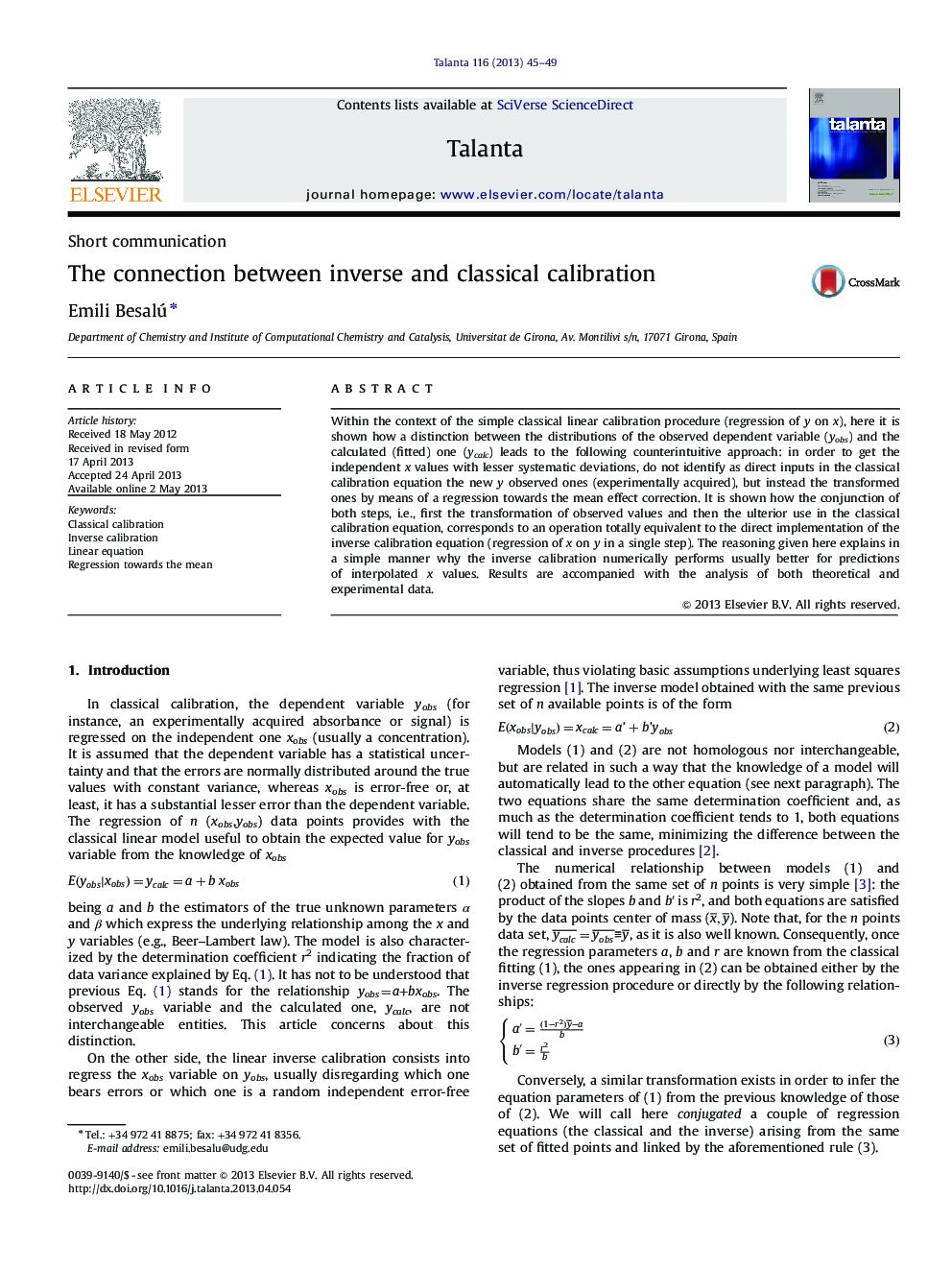| Article ID | Journal | Published Year | Pages | File Type |
|---|---|---|---|---|
| 7681407 | Talanta | 2013 | 5 Pages |
Abstract
Within the context of the simple classical linear calibration procedure (regression of y on x), here it is shown how a distinction between the distributions of the observed dependent variable (yobs) and the calculated (fitted) one (ycalc) leads to the following counterintuitive approach: in order to get the independent x values with lesser systematic deviations, do not identify as direct inputs in the classical calibration equation the new y observed ones (experimentally acquired), but instead the transformed ones by means of a regression towards the mean effect correction. It is shown how the conjunction of both steps, i.e., first the transformation of observed values and then the ulterior use in the classical calibration equation, corresponds to an operation totally equivalent to the direct implementation of the inverse calibration equation (regression of x on y in a single step). The reasoning given here explains in a simple manner why the inverse calibration numerically performs usually better for predictions of interpolated x values. Results are accompanied with the analysis of both theoretical and experimental data.
Keywords
Related Topics
Physical Sciences and Engineering
Chemistry
Analytical Chemistry
Authors
Emili Besalú,
